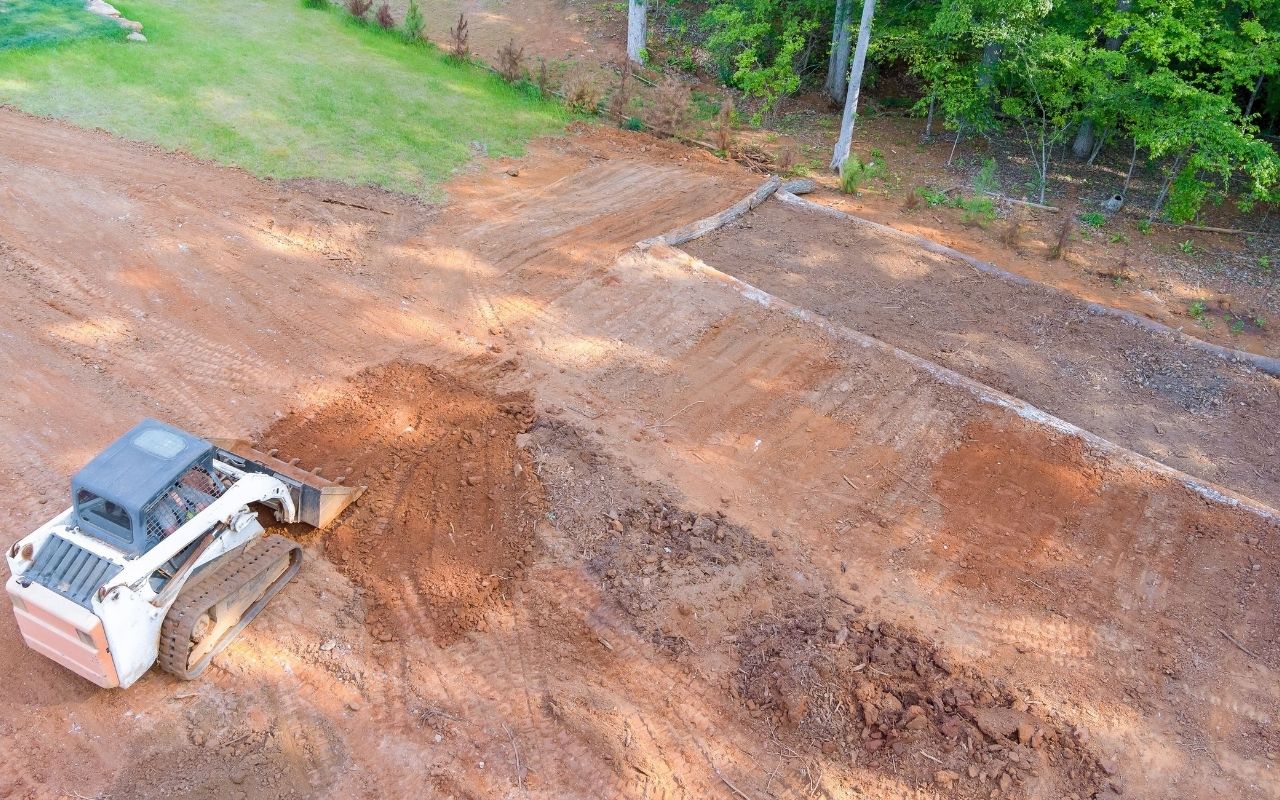
- Wed, May 2025
- |
- Moran’s Landscaping & Excavation LLC
If you’re dealing with a yard that stays wet long after rain, or water that runs toward your home instead of away, the issue may not be your soil—it’s likely your slope. Yard grading for drainage is one of the most important strategies for homeowners who want to know how to improve lawn drainage and prevent serious landscaping or foundation damage. At Moran’s Landscaping & Excavation LLC, we provide expert grading services that reshape your outdoor space for proper water flow and long-term protection.
What Is Yard Grading and Why Does It Matter?
Yard grading is the process of reshaping the land’s surface to ensure water drains properly. It often involves leveling high areas and filling in low spots so the lawn has a consistent slope away from structures and toward safe drainage zones. A poorly graded yard causes water to pool in dips, soak into your foundation, or erode your topsoil, especially during storms.
The key to grading is subtlety. You don’t need a steep slope—just a gradual one to guide water away naturally. If done incorrectly, grading can worsen drainage problems or create new ones. That’s why professional assessment and execution are so critical.
How Yard Grading Improves Lawn Drainage
Effective grading solves a range of drainage issues in one comprehensive step. It eliminates standing water by providing a clear exit path for rainfall and runoff. This prevents soggy patches that suffocate your grass and create breeding grounds for pests. It also protects your foundation from water intrusion and makes your lawn more usable.
Grading is often paired with other solutions, such as soil aeration or installing French drains. If your property suffers from soil saturation, visit our resource on how to fix waterlogged soil. For homes with compacted or clay-heavy soil, a drainage system may still be needed—check out our guide on how to install lawn drainage for a step-by-step overview.
Signs You May Need Yard Grading
Are you not sure if your lawn needs grading? There are several telltale signs. Water pooling near your foundation is a major red flag. Uneven grass growth or areas that stay muddy longer than the rest of your yard also point to grade issues. Erosion, visible dips, and mulch displacement during rainstorms all indicate improper drainage flow.
Addressing these problems early prevents costly repairs and sets the foundation for other landscape improvements. It also makes it easier to maintain a healthy lawn and supports your efforts to manage invasive plants. Don’t forget to check our advice on what kills weeds permanently to maintain the results of your yard upgrades.
Why Choose Moran’s Landscaping for Yard Grading?
At Moran’s Landscaping & Excavation LLC, we don’t just move dirt—we sculpt your yard with precision. Our team uses industry-grade equipment and years of experience to create the optimal slope for your landscape, ensuring it works with your drainage goals. Whether you’re starting from scratch or correcting an existing issue, we’ll assess your property, explain your options, and execute a lasting solution.
Contact us today to request a free estimate and discover how proper grading can transform your lawn into a drier, greener, more reliable space.
Frequently Asked Questions
Can yard grading fix all my drainage problems?
In many cases, yes. Proper grading addresses the root cause of water pooling by changing how water flows across your yard. However, it can be combined with other systems for the best results.
How much slope does my yard need?
The general rule is a drop of 1 inch per 10 feet away from your home. A professional can measure and adjust your slope accurately.
Will yard grading ruin my lawn?
While grading may temporarily disturb the surface, it’s followed by re-seeding or sod installation. The long-term health benefits far outweigh the short-term inconvenience.
